Customer. Vendor. Seller. Buyer.
All of them have been around since the concept of commerce started.
Fast forward to 2020.
Today, it is all about the ‘Age of the Customer’. Businesses have grown more concerned; some may say, even obsessed with how their customers are treated.
And rightfully so.
It only takes one bad experience for the customer to swear off your business forever.
By the same logic, one outstanding customer experience can convert them into loyal brand ambassadors, lifelong.
So, what is the most natural solution to ensure that your relationship with your customers becomes better?
Isn’t the answer pretty obvious?
Improved customer service with the help of help desk software.
You can have a great product and a very talented staff. But the one thing that the majority of customers will remember in all likelihood is the direct interaction they had with your business.
And who is at the forefront of this experience? Your customer service team, of course!
Great Customer Service Can Be an Asset to Your Business
The bottom line is that your customer service department is the face of the company for your customers. Any experience that they have is primarily a direct outcome of the quality and skill of the team.
Hence, any strong business will look to harness the power of customer service to develop positive relationships with the clients. But if you are a proactive company, you will keep asking the questions, “What is good customer service?”
The core value of outstanding customer service is centralized around attending to the needs and expectations of your customers through careful listening. Therefore, to prevent the relationship from stagnating, you have to be constantly looking out for newer and innovative opportunities for experience enhancement.
Improving Customer Service Standards by Addressing Problems Head-on
Your customers are interacting with your business pretty much every day. It is clear that at some stage, your team will encounter roadblocks and challenges. The success of your business will depend on how skillfully you handle your customer service problems.
Remember, if you can resolve these issues successfully, you would have won a customer for their lifetime. They will return to you again and again, thus, boosting revenue and profits.
On the other hand, if the handling is poor, expect your customers to bolt to your closest competitor. And with it goes your revenue too.
So, the question remains that in spite of knowing the benefits of a positive customer service experience, why is it so hard to deliver it consistently?
Everyone knows that customer service jobs are really challenging. And a problematic customer is probably the icing on the cake.
Problems, queries, and complaints, you never know what’s in store for you next. Some days you could be solving customer problems for one distressed client, whereas other days can feel like a train wreck. And your job is to salvage it all. And end it all on a high note.
10 Common Customer Service Problems and How to Resolve Them
Customer service is no rocket science. But if it’s that simple, then why do so many businesses do not know how to solve customer service problems?
Maybe looking and analyzing the reasons behind common customer service problems as reported by consumers can be a step in the right direction.
Let’s take a closer look at the solutions that can help you get your customer service standards up in the process.
1. When the Response Times Are Long
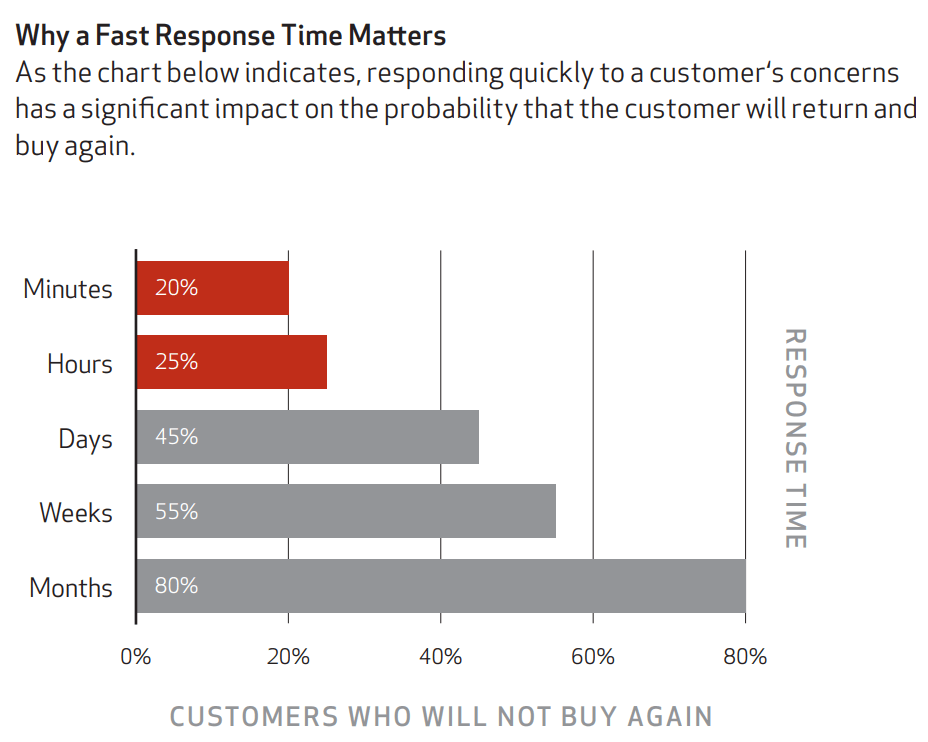
Problem:
Customers today expect communication with service departments to be instant. In fact, they want immediate resolution of their concerns too. This is, indisputably, the first in the long list of the common problem with customer service that needs to be addressed by businesses.
Reasons:
Check out the reasons why this major problem occurs frequently:
- If the company does not establish a standard set of processes and practices to the field, answer and evaluate responses
- If there is no accountability on the part of the agent if response times have been really prolonged
- If agents end up doing a lot of manual work in the absence of adequate automation
- If agents are not trained to handle multiple queries simultaneously
Solution:
To drive yourself back into the fast lane, you need to do the following:
- Create a process that outlines the workflow of what an agent should do when he or she receives a customer query with the focus of handling it promptly and efficiently
- Ensure that your agents are aware of their roles and responsibilities along with who they are accountable to if and when there are lapses in service
- Make use of technology and automation that helps take care of some of the repetitive tasks through a combination of canned responses that are framed to expedite the workflow
- Allow your customers to reach you via multiple channels including email, website chat, phone, hosted with contact center technology, social, text message and allocate resources accordingly
- Start creating a knowledge base to pre-package responses to the most commonly asked questions which also ensures that your service team remains consistent with their levels of service
Customer service issues, if left unattended, can be a frustrating experience for your client. Be proactive and keep your customers informed of how you aim to address their issues quickly.
2. When Customer Reps Do Not Listen Carefully to What the Client Needs
Your customer service problem-solving starts by diving due importance to listening. This is often overlooked, which may result in catching the customer service agent off guard with questions to which you may not have the appropriate answer.
Problem:
You may not want to be in a position where you have to listen to customers complaining. Unless you give your full attention to what the customer is saying, it will be difficult to understand what they need or how to service their problem.
Reasons:
You can land up in this situation due to the following reasons:
- If the customer finds it difficult to explain the issue due to a lack of knowledge of relevant technical terms
- If the customer has been disappointed with the product or service as it did not meet their expectations
- If you simply do not know the answer to the concern because you did not pay attention to what the customer said
Solution:
To help you deliver the right resolution, you can do the following:
- Ensure that you have understood the issue about what the customer requires and double-check the problem if required
- Follow it up with a genuine apology because many customers are simply looking for an acknowledgment of the mistake made by the business
- If you do not have a solution right away, then admit it to the customer right away
- On the other hand, if a ready solution is available, then share it with the customer immediately.
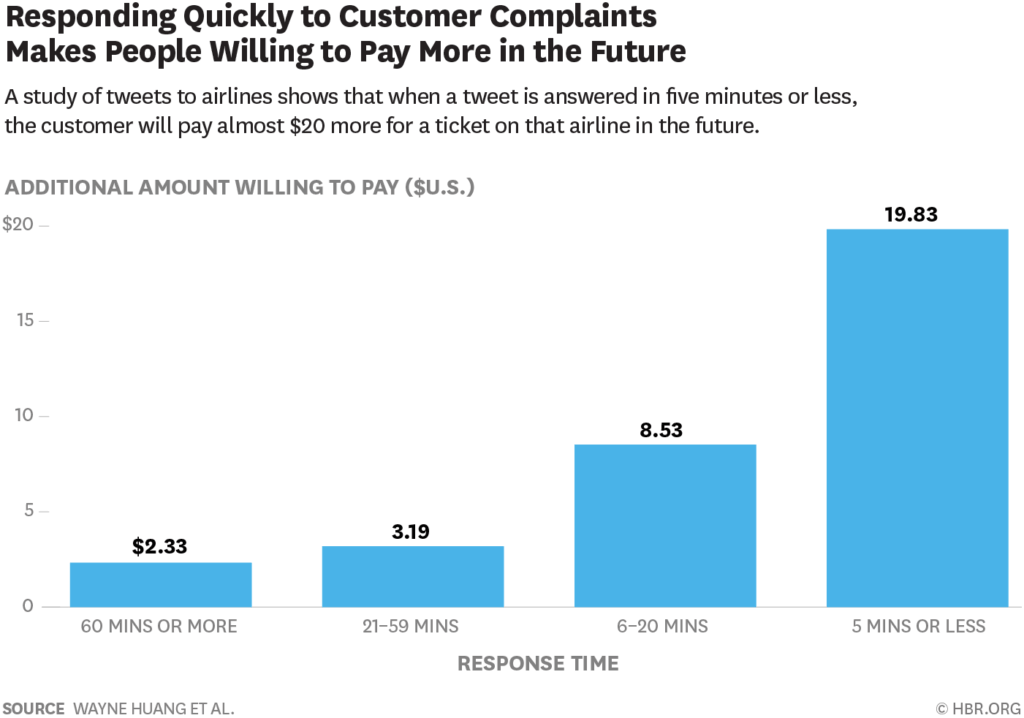
A study published in the Harvard Business Review reported that a complaining customer handled proactively in less than 5 minutes will go on to spend more on purchases in the future.
Your agents should be quick to understand and analyze customer problems.
Remember that empathy, too, begins with active listening. Wouldn’t you call this an ideal customer service problem example?
Read More: Top 20 Issue tracker tools that Help in Issue Identification and Resolution
3. When the Customer Gets Transferred from One Department to Another
When people engage with businesses, and it does not turn out as per their expectations, it is the ultimate death knell to your reputation.
Problem:
When a customer keeps getting transferred from one agent or department to another, it ensures that a customer will never return to you or your business in the future. Neither will they recommend you to people they know. This brings us to the second most common customer service problem.
Reasons:
Here are some reasons why a customer call may get transferred:
- If the customer agent does not have a ready solution to the query that has been put forward by the client
- If the rep is not the appropriate individual to offer a resolution to the issue
- If the agent feels that a superior will be able to offer a better solution to the problem
Solution:
To ensure that the customer is not enraged, this is what you can do to pacify the situation before transferring the customer:
- Inform the customer the reason, why you need to transfer the call to another agent, senior manager or department
- Explain the present situation in detail so that the customer understands that sticking with you may take more time to resolve the issue
- Request permission to transfer the call and ask if the customer has any further questions that need answering
- Wait for a confirmation in the affirmative and then initiate the transfer
Remember that the customer may already be on the brink of losing it if the call has already been transferred several times. Try not to push him any further than you need to. You do want the experience to end on a positive tone.
4. When Customer Service Reps Are Rude to Clients
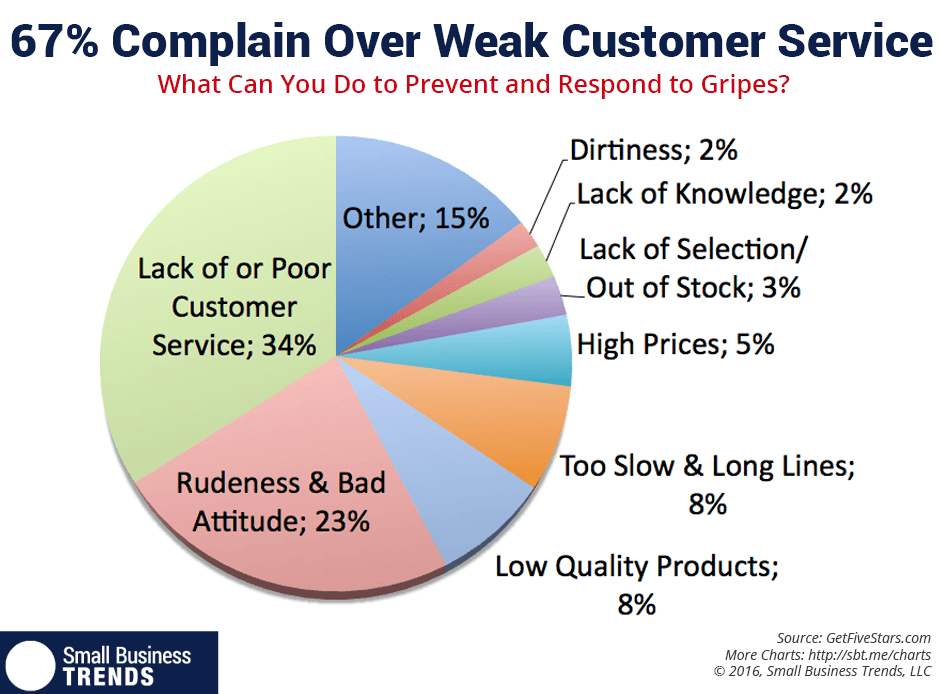
This is possibly the worst-case scenario for a business where the customer service rep has been rude to the client. You can’t deny that this is a tough situation to handle and is best avoided under all circumstances.
Problem:
No matter how frustrated or high-pitched a customer might go at the time of conversing with a service agent, it does not give the rep the license to be rude to the customer in any way. Generally, such situations are handled by an experienced manager.
Reasons:
Circumstances that can lead them in the direction of being rude to the customer include:
- If the customer constantly challenges what the agent is trying to communicate to mitigate the situation to the best of their abilities
- If the customer is rude and abusive to the agent without any provocation from the rep’s side
- If the customer service agent has personal issues that he or she could not put aside whilst attending to customer calls
Solution:
Following these guidelines can help you tackle even a sticky situation such as this:
- You need a team of service personnel with a positive and can-do attitude against hiring people just on the basis of their experience
- Ensure that they are empathetic to customer needs, no matter how badly the customer behaves or speaks
- Invest time and effort to upskill your team, especially in soft skills, through ongoing training and development programs
For now, it may seem like a rather far-fetched strategy to take care of a critical customer service problem and solution. In due course of time, you will see that it was worth the effort.
5. When You Cannot Offer A Solution to The Customer
There will be times when you may not have an instant solution for the customer. Telling that to the customer can be slightly tricky, especially if you notice that the customer is already annoyed. But dealing with an angry customer is part of the job description, and there is really no way of escaping it.
Problem:
Customer service reps are only human and may not be able to offer a resolution of customer queries on the first contact. When customers have to chat or call the service department multiple times, it can be a hassle for them.
Reasons:
There may be several reasons why agents may not be able to offer immediate solutions. These include:
- If the business has encountered this specific customer query for the very first time in which case the solution guidelines have not been outlined for reference
- If the customer service rep has not received adequate training or information on the company, its goals, products, and services
- If the agent simply does not know the answer to the query because he or she has not proactively kept themselves updated on all relevant information and knowledge
Solution:
You can go through possible solutions options in a scenario such as this:
- The agent can refer the query to a more experienced colleague or manager in the absence of an outline to the solution
- The company should pass on all relevant information to their customer service department and follow it up with periodic training sessions
- The agent should also invest time in learning about the company, their products, and services, etc. on their own
- Let the customer know that resolving the issue will take time and promise to get back within a reasonable timeline with the solution the query
Even though this is not the ideal situation to end the conversation, it is a common occurrence in customer service. Just make sure that whenever you get back to the customer, the solution should be able to meet their expectations.
A very important and viable solution here can be an updated knowledge base that the support reps should have access to as and when they need it. This will reduce the chances of inadequate or incorrect information being passed by reps to the customers. That’s a great customer service problem-solving example that anyone can refer to.
6. When Customers Cannot Get A Live Human Being
Be it live chat tools or phones, technology has allowed a significant percentage of customer service processes to be automated. While the life of a customer service agent has been simplified to a large extent, most customers find it really annoying to have a real human dealing with their issues.
Problem:
Customers today want to talk to humans, not machines. This brings us to another key customer service issue that is quite common these days.
Reasons:
The top reasons why businesses are prioritizing automation in their customer service processes are:
- If the business is looking to minimize customer wait times and reduce friction, then automation is the obvious answer
- If the business wants to prioritize and attribute tasks efficiently through workflow automation
- If the business hopes to reduce resource costs in which case automating some of the tasks can be beneficial
- If the business is trying to attract a newer demographic who are not averse to conversing with a chatbot or IVR
Solution:
Here is how you can avoid some of the pitfalls:
- Pick the right tasks such as repetitive jobs, resources for self-service, FAQs, knowledge bases, etc. that can be automated with a knowledge base software which also prevents you from alienating your customers
- Merge your service channels by converting them into an omnichannel strategy to collaborate effectively and efficiently ensuring that information silos do not happen
- Automation should be undertaken to support your human team and not as a substitute for your live agents
- Always request feedback to keep abreast of any change in customer opinion regarding the automation of your processes, either partially or fully
Automation requires a lot of planning to make sure it is successful in offering the right customer experience to your clients. Too much of it can undermine the goals of achieving good customer service. Now, this looks like the perfect customer service problem and solution example. Wouldn’t you agree?
7. When Customer Service Pushes the Wrong Product or Service
This situation can arise if the customer has a specific product or service-related query or maybe needs guidance to decide on, which is a suitable variant or model that will fit best with their needs.
Problem:
Many times, customer service agents adopt a ‘one size fits all’ kind of approach. This may result in them pushing a product or service to the customer, thus, adversely impacting their experience with the business.
Reasons:
You can land up in this situation due to the following reasons:
- If there is a serious lack of knowledge on the part of the agent where he or she does not know the USPs of specific products or services
- If the agent is unable to perform a competitive analysis of the buyer’s needs which may result in a guesstimate rather than an accurate evaluation
- If the rep does not take into account the customer’s interaction history, the products or services that interest him or her, what they’ve searched for in the past, and which pages on the site they have been browsing the most
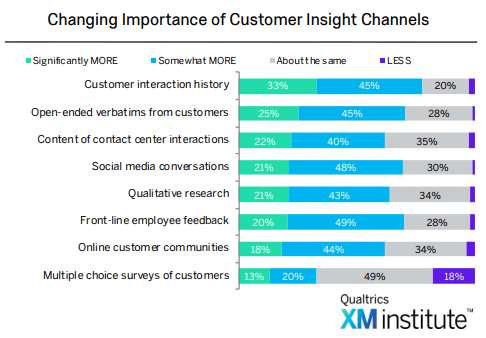
Solution:
You need to do the following to get into the customer’s good books:
- Always listen to the customer’s requirements carefully and then carry out a detailed analysis to recommend the right product or service
- Indulge in some thorough visitor tracking to know what or where the customer has been browsing on your site
- Keep yourself updated with the latest product and service information including features, benefits, prices, and freebies
Your customer is looking up to you for directions. Presenting him or her with a range of helpful suggestions will ensure that you drive the conversation on a positive note. All staff should be trained so that customers receive a consistently delightful, not just satisfactory experience.
![]()
Using live chat software that helps you track customer history as soon as the customer says its first word can make things easier for you. Live Chat comes with a plethora of features that help you access customer information in real time and provide solutions that delight customers.
8. When Customer Service Does Not Follow Through with Promise
If the customer service department is unable to offer an instant solution to the client, they will ideally make a promise to deliver it within a stipulated period. In many instances, it has been observed that service reps are repeatedly missing to live up to what they’ve promised the customer.
Problem:
This brings us to the next customer service problem of reps not following through with the promise that they have made to the customer. It can be infuriating when the issue remains unsolved due to this.
Reasons:
This customer service problem goes against the very ethos of the profession. However, some reasons why this may still happen are:
- If the processes are not in place to ensure that the agent receives alerts and notifications of an open ticket on time
- If the customer service agent is not proactive in passing the information to all relevant teams who need to be involved in solving the issue
- If the customer support agent is just plain lazy and not bothered about closing the issues with the customer
Solution:
The following strategies can help fix the above-mentioned issues:
- When the agent follow-up on time, customers feel that they are cared for, which automatically increases customer trust and reliability in the brand
- Do not leave a lot of time gap between your last conversation and the follow-up and the faster you reach out, better are the chances of turning an average experience into a great one
- If the customer has contacted your service department during office hours, be sure to return the call, and email within 24 hours
- Try and avoid ‘Yes’ or ‘NO’ responses when you are following up with the client as opposed to asking more open-ended questions to get more information
No matter what the reason or type of follow-through is, always remember to thank your customers for continuing to be loyal patrons of your brand. A simple ‘Thank You’ will suffice. Streamline processes with the integration of a helpdesk software to ensure that the customer experience is top-notch.
9. When There Is Lack of Customer Centricity
It is easy to lose the culture of customer centricity as the business keeps expanding and growing. When you fail to place the customer at the core of your business, eventually, everything starts falling apart.
Problem:
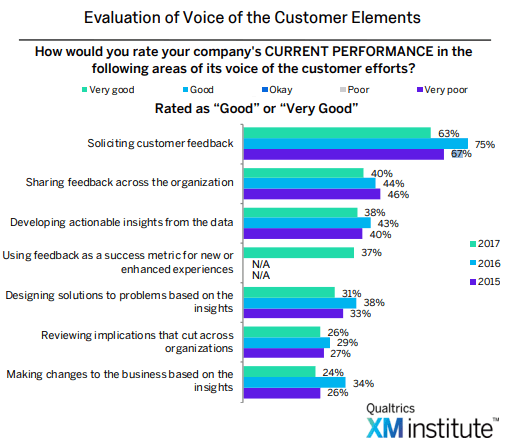
Temkin’s State of Voice of the Customer Programs 2017 report cited that 67% of large companies rated themselves as good at soliciting customer feedback, yet only 26% think they are good at acting on it.
This brings us to the next problem with customer service, where it is internal barriers are leading to behaviors that are detracting businesses from promoting a customer-centric culture.
Reasons:
Check these top reasons why customer-centricity issues are not being addressed:
- If the management and top leadership is weak, there will be little or no opportunities to develop the business as a customer-centric organization and this emotion percolates right to the depths of the customer service department too
- If the customer agents are weak and untrained, they will not be able to assess customer needs and expectations effectively
- If there is an overall lack of vision, the customer service department can never excel at their jobs as excellent customer service starts right from the top
Solution:
Some of these tips can help get you on track:
- Strengthen communication channels between the executive, mid-level, and frontline teams
- Create a more holistic picture of your customers by continually communicating, sharing goals, and linking information and data for arriving at evidence-based decisions
- Empower your service agents to make decisions that also propel customer growth strategies
With a vision that is purpose-driven and a clear path forward will help to draw upon emotional belief systems and team member rationale to walk the talk of a customer-centric organization.
10. When Customer Service Is Not Aligned to Customer Journey
Bad customer experience at any point in the customer journey can absolutely ruin the relationship between the client and the business. Just having a good team in place is not enough. The service team should be aligned with the needs and desires of the customers throughout their lifecycle.
Problem:
This brings us to the last problem with customer service, where businesses are not paying adequate attention to getting their customer service workflow in line with the customer’s lifecycle.
Reasons:
The key reasons are:
- If the business fails to recognize the importance of mapping the customer journey that is aligned with your brand
- If the top leadership is unable to comprehend the worth of mapping customer journeys to help achieve organizational goals
- If the management is not aware of how customer journey mapping can drive growth and offer profitability for the business
Solution:
Follow these guidelines to succeed:
- Get out of the inside-out perspective of customer journeys because it is grounded with a biased viewpoint
- Focus on how customers and prospects interact with the brand over multiple touchpoints including your website and social channels, outbound marketing, sales team and customer service department
- Do not make the mistake of overlooking all relevant participants in the customer journey or your risk transforming the customer map into a superficial tool with little or no value
Always base your customer mapping on research that will help your service agents to understand the customer experience from the outside-in. Remember to capture the entire journey and always highlight the key moments that push your customers to stay on the course of their purchase path.
Wrapping Up
Competition is fierce in this global marketplace, and customer service problems are inevitable. And sometimes it can be quite overwhelming to keep up with the ever-evolving innovations that have tremendous control over your customer experience, no matter how good your business is.
It will always be outstanding customer service that will make them come back for more. People want to feel special. By addressing their customer service problems, you want your customers to walk away from the interaction feeling not only satisfied with the outcome but valued, understood, and prioritized. Try to adopt the solutions mentioned above and wherever required make use of a competent customer support tool to upgrade your customer service and delight your customers.
Frequently Asked Questions
How do you write a problem statement for a customer?
A problem statement for a customer primarily involves writing out the detailed description of a specific issue raised by a client that needs to be addressed by the team responsible for problem-solving.
Start by describing the present condition of the customer’s situation and explain the problem from a customer perspective. Outline any possible financial implications that may be incurred as a result of solving the problem. Without evidentiary support, arriving at a final solution will be impossible. Conclude by explaining the obvious advantages of adopting the resolution.
What are the types of dissatisfied customers from customer service?
Generally, dissatisfied customers as a result of poor customer service can be classified into eight types – meek, aggressive, high roller, rip-off, expressive, passive, constructive, and chronic.
What are the problems faced by customers?
There are several common problems that customers face today.
Topping the list is the lack of authentic information on products and services. Along with that, complex navigation to specific pages, followed by connection issues with digital payments, is also quite a hassle. Poor standards of customer service, after-sales service, and vague return policies also create problems for customers frequently.
How to solve customer service problems?
Handling customer service problems is never an easy job. While it may seem like a challenging process, remember that even the frustrated customer is looking for a solution.
The best way to tackle such situations is by carefully listening to the issue at hand and without interruption. Acknowledge the issue and ensure that you have understood the concern from the customer’s point of view. Apologize and then offer a solution if it is readily available.
Alternatively, if the issue needs more investigation or you do not have an instant resolution, communicate the same to the customer. End the call thanking the customer for calling in and asking if he or she needs any further assistance.
Remember that customer service means taking the good with the bad.
 Tips
Tips
We’d love to hear your tips & suggestions on this article!
FREE. All Features. FOREVER!
Try our Forever FREE account with all premium features!

 We'd love your feedback!
We'd love your feedback! Thanks for your feedback!
Thanks for your feedback!







